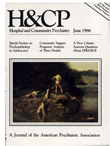Attention Deficit Disorder in Adolescents
Abstract
Attention deficit disorder may be part of a cluster of observable behaviors that reflect a dysfunctional central nervous system. The authors describe the differential diagnosis of attention deficit disorder in adolescents, a complex process in which the clinician must determine if observed distractibility, hyperactivity, or both are due to the disorder or are a reflection of anxiety, depression, or emotional, social, or family problems. In addition, the clinician must determine the relationship of these factors to the learning disabilities so often associated with attention deficit disorder. The authors discuss the clinical management of attention deficit disorder and review the literature on the clinical course and outcome of children and adolescents with the disorder.
Access content
To read the fulltext, please use one of the options below to sign in or purchase access.- Personal login
- Institutional Login
- Sign in via OpenAthens
- Register for access
-
Please login/register if you wish to pair your device and check access availability.
Not a subscriber?
PsychiatryOnline subscription options offer access to the DSM-5 library, books, journals, CME, and patient resources. This all-in-one virtual library provides psychiatrists and mental health professionals with key resources for diagnosis, treatment, research, and professional development.
Need more help? PsychiatryOnline Customer Service may be reached by emailing [email protected] or by calling 800-368-5777 (in the U.S.) or 703-907-7322 (outside the U.S.).



